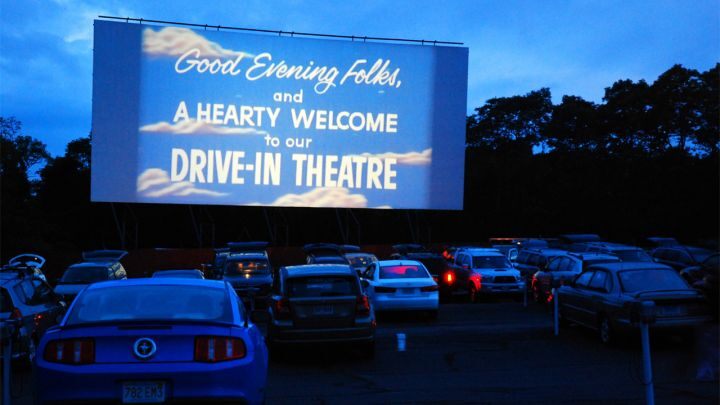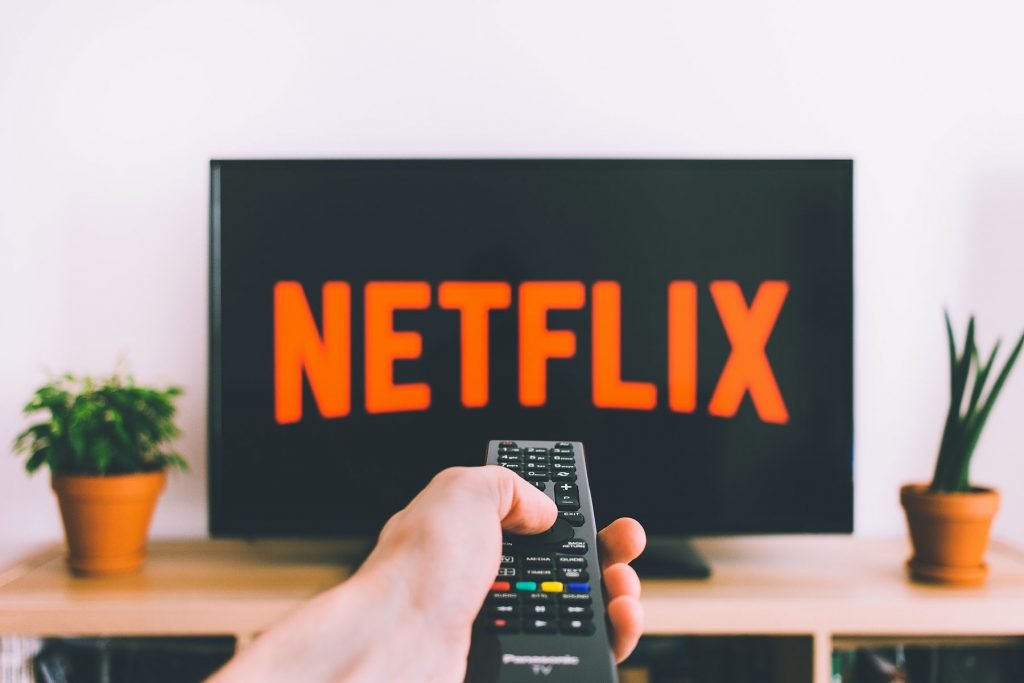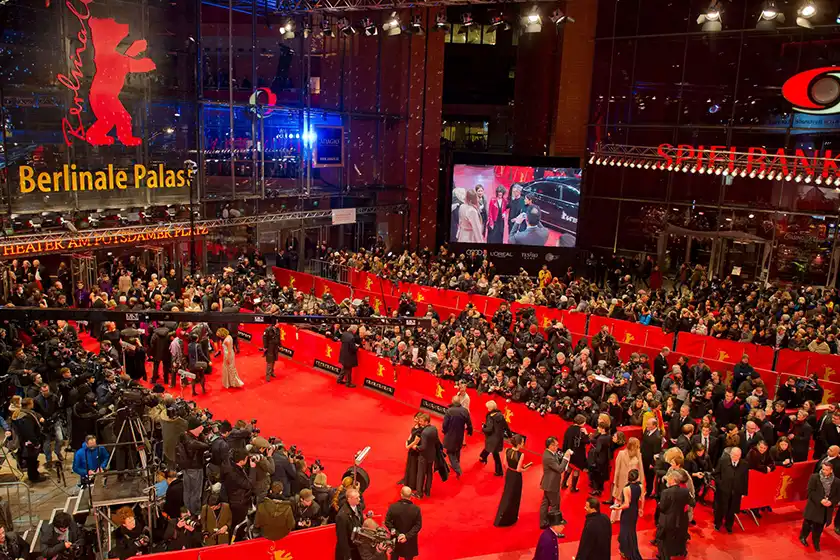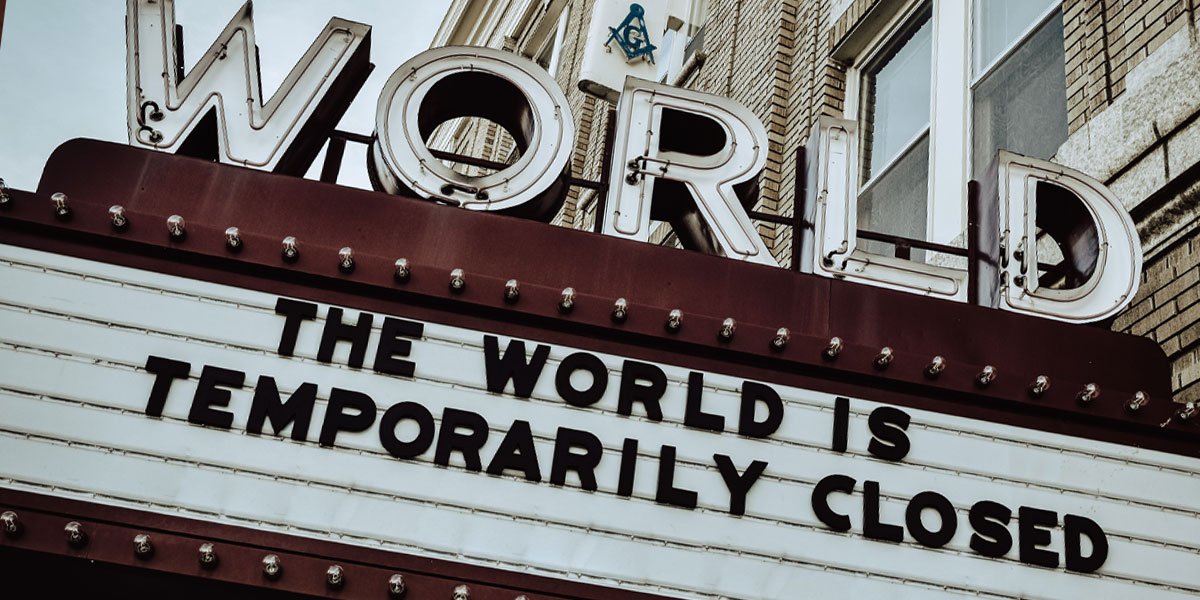What will film distribution look like after the COVID crisis ends? Thoughts on the survival of theaters, the return of drive-ins and online film festivals.
Previously in this series on what the film industry’s future might look like after the pandemic, I speculated on topics of filmmaking and possible trends that may arise in new films. For this final article in the series, let’s explore the future of film distribution, with a focus on streaming and the survival of the traditional theater experience.
FILM DISTRIBUTION AFTER COVID: THEATERS IN LIMBO AND DIGITAL FILM FESTIVALS
MOVIE THEATERS: WILL THEY SURVIVE A PANDEMIC?

It’s not unreasonable to think COVID to be the final threshold to streaming and the death of the traditional movie theater, but there’s certainly a strong case for the survival of theaters. When quarantine ends, people will be desperate to leave the house, and experiencing a film on the big screen will be the perfect escape. Part of what makes the theater experience so appealing is travelling somewhere to watch a film—making the journey to the theater heightens the significance of the event and prompts greater investment in the film and the experience itself, and audiences get that.
Demand will arrive, but reopening will be another story. Realistically, theaters will reopen with reduced capacity to maintain social distancing for audience members for some time, which will likely prompt seating reservations, especially for larger releases. With smaller audience capacity, theaters may need to raise prices, which could deter some audiences, or fewer films will occupy more screens and thus begins a bidding war for theatrical dominion. Ultimately, theater survival will depend on audience demand, theater capacity, and ticket prices, and if audiences will justify those costs or would prefer to just watch new releases in the comfort of their own homes if they are concurrently released on streaming.
DRIVE-IN THEATERS

Once thought an obsolete nostalgic novelty, drive-in theaters have experienced an unexpected revival during the pandemic. It’s the perfect solution to the daily ennui of quarantine—it’s a chance to get out of the house and go somewhere else for a couple of hours, and, since audiences can watch a film from the safety of their cars, they can still practice social distancing. Even in an age of streaming, this renewed popularity of the drive-in proves that audiences still yearn for the classic cinema experience and will participate as long as it’s safe to do so. When quarantine ends, audiences will desperately want to leave the house and watch films in a setting other than on their couch, so it’s possible to see drive-ins stay around for some time, especially if theaters reopen with reduced capacity.
STREAMING

The one cinematic avenue that has guaranteed its future survival is digital streaming. With choices like Netflix, Amazon Prime, Disney+, Hulu, the Criterion Channel, Mubi, and countless others, streaming platforms have proved themselves more than successful in fulfilling content needs during quarantine. Pre-pandemic, theaters and streaming platforms have managed to coexist, but not until after the pandemic will we see whether streaming platforms take total control over all content distribution. There’s a compelling case for streaming-only releases of films—why travel all the way to a cinema with a noisy audience on a Friday evening to catch the latest Star Wars sequel when you could just enjoy it in the comfort of your own home? With closed movie theaters, quarantine will serve as an experiment to test how successful this model truly works.
However, there are some important factors to consider. How much will audiences have to pay for new releases? Will they be included with regular subscriptions to streaming platforms or will audiences have to pay premium prices for instant access or wait until titles become fully available months later? How will digital box office numbers compare to those from traditional theaters? It’s easy to imagine large groups (once social distancing has ended, of course) watch new releases together, so box office numbers will not necessarily correlate with the number of audience members that we see with traditional box office results. I think this will keep studios hesitant about streaming-only releases, so it’s possible to see a hybrid model where big tentpole blockbusters premiere in theaters and smaller, less financially-viable releases premiere on streaming platforms.
THE FUTURE OF FILM FESTIVALS

Closed movie theaters aren’t the only cinematic casualty of COVID—major festivals like SXSW and Cannes have cancelled their in-person events and have adopted alternate streaming options to showcase films, a decision that could redefine their future. Cancelled film festivals represent a significant loss to the global film community, as many filmmakers have spent years working on projects hoping to make a big festival premiere and jumpstart their career. Upcoming cinematic talent is found in these first features, not to mention distribution deals, marking lots of lost opportunities not only for 2020, but for years to come if future festivals become cancelled.
The festival experience isn’t just about the films themselves, it’s a chance to share a passion for cinema with fellow filmgoers and to be the first set of eyes to watch brand new features from fresh creative voices. They’re also vital for networking opportunities, industry workshops and panels, and introductions and Q&A’s from a film’s cast and crew. These could all be held online, but seeing a director introduce a film on a computer screen just isn’t the same as in real life. The upside of online festivals is that they could offer wider access to new films and audiences can enjoy these new features without having to attend exclusive premiers at festivals or wait until later releases. Greater exposure to new films online can generate attention and discussion about upcoming directors and open new doors to wider avenues of global cinema. If festivals come back after the pandemic, then it’s possible to see maybe a hybrid, with both a physical event and online access to these films.
THE FILM INDUSTRY AFTER COVID – READ ALSO:

 loudandclearreviews.com
loudandclearreviews.com
 loudandclearreviews.com
loudandclearreviews.com
